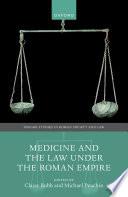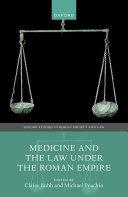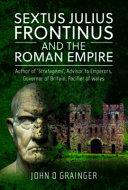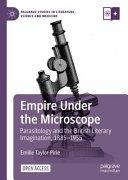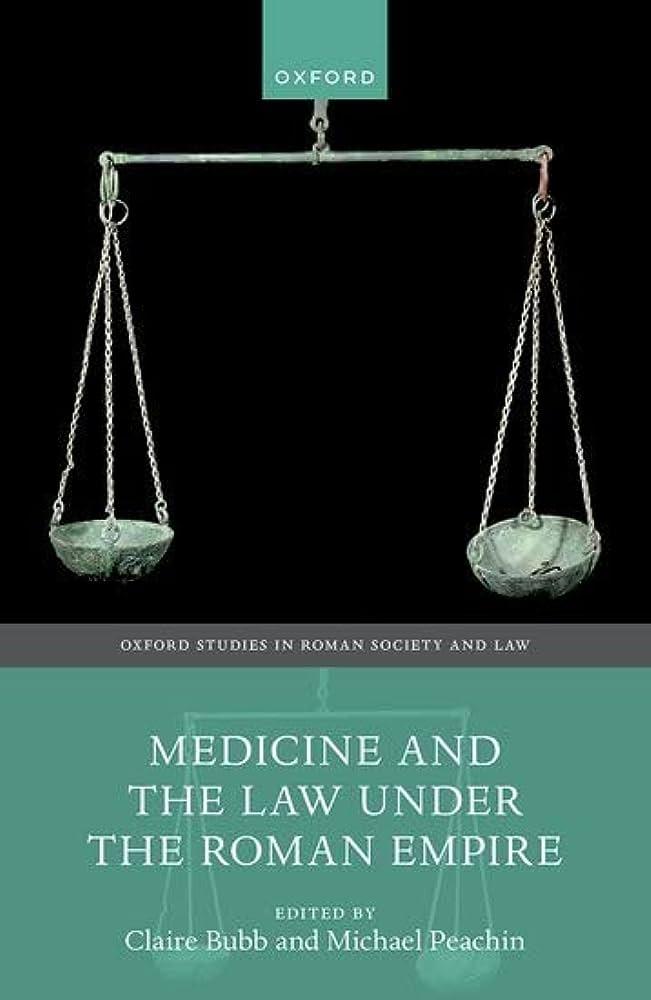AbbreviationsandCitedEditionsofthe GalenicCorpusUsedintheVolume
WehavecollectedhereacompletelistofGalenicworkscitedacrossthisvolume,including theirabbreviation,theirfulltitleinEnglishandLatin,andthebibliographicaldetailsand abbreviationsofanyeditionsreferredto.ThisisneitheracompletelistoftheGalenic corpus,noracompletelistofeditionsoftheworksmentioned,butitwillbesufficientto allowareaderunfamiliarwithGalentonavigatethecitationsinthisvolume.Inadditionto anyeditionslistedhere,wehavealways,whereavailable,citedthepaginationfromthe Kühnedition(K),whichisstandardinmostlatereditionsandtranslations:C.G.Kühn,ed., ClaudiiGaleniOperaOmnia (Leipzig:C.Cnobloch,1821–1833)(re-issued,Cambridge: CambridgeUniversityPress,2011).Theabbreviationsandtitlesherelargelyfollowthosein theappendicestotheCambridgeGalenTranslationseries,whichalsoofferacomprehensivelistofeditionsandtranslations.ForancientauthorsotherthanGalen,wefollowthe abbreviationsinS.Hornblower,A.Spawforth,andE.Eidinow,eds., OxfordClassical Dictionary (4th ed.)(Oxford:OxfordUniversityPress,2012).
*indicatesaworkthatisgenerallyconsideredtobepseudo-Galenic.
AAOnAnatomicalProcedures (Deanatomicisadministrationibus)
G=I.Garofalo, Galenus:AnatomicarumAdministrationumLibriqui SupersuntNovem.EarundemInterpretationArabicaHunainoIsaaci FilioAscripta (Naples:Brill,1986–2000).
Aff.Pec.Dig.OntheAffectionsandErrorsoftheSoul (Depropriorumanimicuiuslibet affectuumetpeccatorumdignotioneetcuratione)
Ant.Antidotes (Deantidotis)
Art.Sang.WhetherBloodIsNaturallyContainedintheArteries (Aninarteriis naturasanguiscontineatur)
F-W=D.J.FurleyandJ.S.Wilkie, GalenonRespirationandthe Arteries (Princeton,NJ:PrincetonUniversityPress,1984).
Comp.Med.Gen.TheCompositionofDrugsAccordingtoKind (Decompositione medicamentorumpergenera)
Cons.CustomaryPractices (Deconsuetudinibus) CMGSuppl.III=I.M.Schmutte,ed.,andF.Pfaff,trans., GaleniDe consuetudinibus.CorpusMedicorumGraecorumSupplementumIII (Leipzig:Teubner,1941).
CPAntecedentCauses (Decausisprocatarcticis)
H=R.J.Hankinson, GalenonAntecedentCauses (Cambridge: CambridgeUniversityPress,1998).
Cris.OnCrises (Decrisibus)
Alex.=B.Alexanderson, PeriKriseonGalenos.StudiaGraecaetLatina Gothoburgensia,23(Stockholm:Almquist&Wiksell,1967).
Di.Dec.CriticalDays (Dediebusdecretoriis)
Diff.Puls.TheDistinctTypesofPulse (Dedifferentiispulsuum)
Dig.Puls.TheDiscernmentofthePulse (Dediagnoscendispulsibus)
Hipp.Epid.IICommentaryonHippocrates’ EpidemicsII(InHippocratis EpidemiarumlibrumII)
CMGSuppl.Or. V2=U.VagelpohlandS.Swain,eds.andtrans., Galeni InHippocratisEpidemiarumLibrumIICommentariorumI–VI. Corpus MedicorumGraecorum,SupplementumOrientaleV2(Berlin:De Gruyter,2016).
Hipp.Epid.IIICommentaryonHippocrates’ EpidemicsIII(InHippocratis EpidemiarumlibrumIII)
CMG V10,2,1=E.Wenkebach,ed., GaleniInHippocratis EpidemiarumLibr.IIIComm.III. CorpusMedicorumGraecorum V10,2,1(Leipzig:Teubner,1936).
Hipp.Epid.VICommentaryonHippocrates’ EpidemicsVI(InHippocratis EpidemiarumlibrumVI)
CMG V10,2,2=E.Wenkebach,ed.,andF.Pfaff,trans., GaleniIn HippocratisEpidemiarumLibr.VIComm.I–VIetComm.VI–VIII. CorpusMedicorumGraecorumV10,2,2(Berlin:Teubner,1956).
Hipp.Prog.CommentaryonHippocrates’ Prognostic(InHippocratisPrognosticum)
CMG V9,2=H.Diels,J.Mewaldt,andJ.Heeg,eds., GaleniIn HippocratisProrrheticumIcommentariaIII,Decomatesecundum Hippocratem,InHippocratisPrognosticumcommentariaIII (Leipzig andBerlin:Teubner,1915).
Hipp.Prorrh.CommentaryonHippocrates’ Prorrhetics(InHippocratisDe praedictionibus)
CMG V9,2=Diels,Mewaldt,andHeeg, Galeni (1915)(seeabove, under Hipp.Prog.).
HNHCommentaryonHippocrates’ NatureofMan(InHippocratisDenatura hominis)
CMG V9,1=J.Mewaldt,G.Helmreich,andJ.Westenberger,eds., GaleniInHippocratisDenaturahominisComm.III,InHippocratisDe vitcuacutorumComm.IV,DediaetaHippocratisinMorbisAcutis CorpusMedicorumGraecorumV9,1(LeipzigandBerlin:Teubner, 1914).
HVACommentaryonHippocrates’ RegimeninAcuteDiseases(InHippocratis Deacutorummorborumvitcu)
CMG V9,1=Mewaldtetal., Galeni (1914)(seeabove,under HNH).
Indol.AvoidingDistress (Deindolentia)
BJP=V.Boudon-Millot,J.Jouanna,andA.Pietrobelli, Galien.Tome IV.Nepassechagriner (Paris:BellesLettres,2010).
Inst.Log.IntroductiontoLogic (InstitutioLogica)
Kalbfleisch=K.Kalbfleisch, Galeniinstitutiologica (Leipzig:Teubner, 1896).
Lib.Prop.OnMyOwnBooks (Delibrispropriis)
B-M=V.Boudon-Millot, Galien.TomeI.IntroductionGénérale,Sur l’OrdredesesPropresLivres,SursesPropresLivres,Quel’Excellent MédecinestAussiPhilosophe (Paris:BellesLettres,2007).
Loc.Aff.OnAffectedPlaces (Delocisaffectis)
MMOntheMethodofHealing (Demethodomedendi)
Nat.Fac.OnNaturalFaculties (Denaturalibusfacultatibus)
SM =J.Marquardt,I.vonMüller,andG.Helmreich, ClaudiiGaleni PergameniScriptaMinora (Leipzig:Teubner,1884–1893).
Opt.Med.ThattheBestDoctorIsAlsoaPhilosopher (Quodoptimusmedicussit quoquephilosophus)
B-M=Boudon-Millot, Galien (2007)(seeabove,under Lib.Prop.).
SM =Marquardtetal., ScriptaMinora (1884–1893)(seeabove,under Nat.Fac.).
Opt.Med.Cogn.OnRecognizingtheBestPhysician (Deoptimomedicocognoscendo)
CMGSuppl.Or.IV=A.Z.Iskandar, GaleniDeoptimomedico cognoscendo. CorpusMedicorumGraecorum,Supplementum OrientaleIV(Berlin:AkademieVerlag,1988).
Ord.Lib.Prop.OntheOrderofMyOwnBooks (Deordinelibrorumpropriorum)
B-M=Boudon-Millot, Galien (2007)(seeabove,under Lib.Prop.).
PHPOntheOpinionsofHippocratesandPlato (DeplacitisHippocratiset Platonis)
CMG V4,1,2=P.DeLacy, GaleniDeplacitisHippocratisetPlatonis. CorpusMedicorumGraecorumV4,1,2(Berlin:AkademieVerlag, 2005).
Praen.OnPrognosis (DepraenotioneadEpigenem)
CMG V8,1=V.Nutton, GaleniDepraecognitione.CorpusMedicorum GraecorumV8,1(Berlin:AkademieVerlag,1979).
Protr.ExhortationtoStudytheArts (Protrepticus)
B=V.Boudon, Galien.TomeII.Exhortationàl’ÉtudedelaMédecine. ArtMédical (Paris:BellesLettres,2002).
Sem.OnSemen (Desemine)
CMG V3,1=P.DeLacy, GaleniDesemine. CorpusMedicorum GraecorumV3,1(Berlin:AkademieVerlag,1992).
SMTTheCapacities[andMixtures]ofSimpleDrugs (Desimplicium medicamentorum[temperamentisac]facultatibus)
*Ther.Pamph Theriac,toPamphilianus (DetheriacaadPamphilianum)
B-M=V.Boudon-Millot, Galien.TomeX.ThériaqueàPamphilianos (Paris:BellesLettres,2021).
*Ther.Pis.Theriac,toPiso (DetheriacaadPisonem)
B-M=V.Boudon-Millot, Galien.TomeVI.ThériaqueàPison (Paris: BellesLettres,2016).
Thras.Thrasybulus (ThrasybulussiveUtrummedicinaesitangymnasticae hygiene)
Ut.Diss.TheAnatomyoftheUterus (Deuteridissectione) CMG V2,1=D.Nickel, GaleniDeuteridissectione. CorpusMedicorum GraecorumV2,1(Berlin:AkademieVerlag,1971).
Ut.Resp.OntheFunctionofBreathing (Deutilitaterespirationis) F-W=FurleyandWilkie, GalenonRespiration (1984)(seeaboveunder Art.Sang.).
Ven.Sect.Er.OnVenesectionAgainstErasistratus (Devenaesectioneadversus Erasistratum)
Ven.Sect.Er.Rom.OnVenesectionAgainsttheErasistrateansatRome (Devenaesectione adversusErasistrateosRomaedegentes)
SettingMedicineandLawApart, Together
ClaireBubbandMichaelPeachin
Thisvolumedrawsthe fieldsofmedicineandlaw,astheseexistedduringtheearly imperialperiodofRome,intoconversationwithoneanother.Now,themerefact thataself-consciousjuxtapositionofthesetwo fieldsintheirancientmanifestationshasneverbeenseriouslyattemptedmightalonewarranttheundertaking. Thatsaid,itcanindeedbearguedthattherearetrulycompellingreasonsfor launchingpreciselysuchaproject.¹
Webeginwiththefactthateachofourenterpriseswascrownedbyaresplendentintellectualeffort,whichmanifesteditselfinavoluminousliterature.Herelay theterrainoftworarifiedandexquisitelytrainedelites.Justasvital,however,were thepragmaticreal-worldincarnationsofthesedisciplines,wheresociety’sbigand little fishalikemightthrive.Onegoalinthepagesthatfollowwillthusbeto imaginethecerebralandthemoreworkadayfacetsofeachdisciplineasintegral
Anotetothereader:Thereareanumberofissuesortopicsthatarediscussedinvariousplaces throughoutthisvolume forexample,thematterofprofessionalisminaRomancontext.Ratherthan pepperourfootnotestooheavilywithcross-references,westeerthereadertoourindex,whichwill serveastheprimarycomprehensiveguidetodiscussionofsuchmatters.
¹Theonlyworkknowntouswhichattemptsearnestlytostudythesetwo fieldsjointlyisHerberger, Dogmatik (1981).Herbergerfocusesonaparticulartheoreticalapproach,Dogmatism,thathappensto appearineachofour fields,andhetracesthisphenomenonfromantiquitytothenineteenthcentury. Thus,thechaptersofhisbookrelevanttoantiquitydrawonlyoneconnectionbetweenmedicineand law,namely,theircommonengagementwithDogmatism.However,seealsoMendelson, “Aspects” (2002),wherecausationinmedicineandlawisexaminedcomparatively.Inadifferentvein,Below, Der Artzt (1953),studiestheregulationofdoctors,andtheirpracticeofmedicine,bythejurists;hethus offersaconcentratedstudyofamedicallyrelevantsetoflegalquestions,ratherthananythinglikethe jointstudyweareconcernedwithhere.Wewouldliketodrawattention,though,toElizabethRawson’ s commentatthestartofachapteronmedicinequaintellectualpursuit: “Itisinterestingtocontrastthe wayinwhichGreekinfluencewasexercisedinthismostGreekofallsubjects[i.e.,medicine],withthe wayitaffectedthemostRoman,law” (Rawson, IntellectualLife (1985)171).Inotherwords,Rawson appearstosenseaffinities,whichmightcauseonetosingleout,andthencompare,medicineandlawas intellectualpursuits.Rawson’scommentalsoshinesaspotlightonanelephantintheroom,sotospeak: namely,thequintessentialGreeknessofelitemedicineandtheunambiguousLatinityofRoman jurisprudenceduringthehighimperialperiod.However,astheargumentspresentedinthis introduction and,indeed,thoseresultingfromthevolumeasaunity willhopefullyconvey,the practitionersoftheseartswereneverthelessoperatinginthesamebroadersocial-political-cultural worldandweresubjecttothepullsofthatenvironmentinnotablysimilarways.Cf.alsothecomments ofUden,below,p.218.
ClaireBubbandMichaelPeachin, SettingMedicineandLawApart,Together In: MedicineandtheLawundertheRoman Empire.Editedby:ClaireBubbandMichaelPeachin,OxfordUniversityPress.©ClaireBubbandMichaelPeachin2023. DOI:10.1093/oso/9780192898616.003.0001
4
partsofanoriginalwhole eveniftheconcentrationwillindeedbeontheelite practitionersofthese fields.²Thislogicofamalgamationwilltakeafurtherstep. Theargumentwillbethatbothofthesearts,in all oftheirmanifestations,were thoroughlyboundupinabroadmatrixofsocial,political,cultural,andintellectualconcerns,whichwillhaveservedsubstantiallytoshapetheseoccupations themselves,andtodosothroughandthrough.Then, finally,wewillalsowantto suggestthataparticularsetofdefiningcharacteristics,whichbecomesdiscernible withrespecttobothmedicineandlaw,servesontheonehandtojointhesetwo occupationsasafairlydistinctpair,whileitsimultaneouslyworkstoisolatethem asaduo,incertainregards,frommostotherbrandsofspecializedexpertise.Thus, byjuxtaposinglawandmedicineinalloftheseways,wehopetoencouragethe kindofbroadandmorenuancedvisionofthesetwoareasthemselves aswellas ofthewidernexusofspecializedexpertiseundertheRomanEmpirealtogether whichhasbeengainingsignificanttractioninrecenttimes.³
Ultimately,however,oneall-encompassingconcernlurkshere.Theissuecan besuggestedviatwoquestions.First,inthebroadesttermspossible,andespecially ifwemovebeyondthepurelyutilitarian,whatkinds andwemeanexpresslyany andeverykind of work werethe fieldsoflawandmedicineexpectedtoperform inthatnowfarawayworldofancientRome?Second,howmightthesundrywants oftheancientcommunitywithregardtothese fieldshaveservedtoshapethevery natureofmedicalandlegalexpertiseinthosetimes andindeed,ofmedicineand lawaltogether?What,inotherwords,andinthemostall-encompassingsense possible,wastheplaceofasciencelikemedicineorlawinthethoughts,desires, andperceivedneedsoftheancientRomancommunity,andhowdidallofthat,in turn,potentiallyinfluencethesubstanceofthese fieldsofendeavor?Wewillnotbe abletoaddresstheseissuescomprehensively,oreventooterriblyclosely;however, wedoverymuchhopethatthepresentvolumewillencouragefurtherthoughtin thesedirections.
Soastosetthestageforourdiscussion,wewillnowpresenttwo figureswho typicallywouldnotbeexpectedtocrosspaths or,inanycase,theywouldnotbe expectedtodosointhearenaofmodernscholarship.Eachoftheseindividuals reapedtoweringacclaiminthesecondcentury becauseofhisengagementinan expertpursuit.Onefashionedanidentityforhimselfasdoctor,theotherasjurist.
²Withregardtothelesseminentlawyers,onemightnowbeginwith:Jones, “Juristesromainsdans l’orientgrec” (2007);Lehne-Gstreinthaler, “JuristsintheShadows” (2016);Dolganov, “Nutricula causidicorum” (2020).Ofcourse,therelevantentriesinKunkel, Juristen (1967/2001)arestilltobe consulted.Fortheparallelgroupofmedicalpractitioners awideanddiversepopulation see, Nutton, “Healers” (1992)and AncientMedicine (2013)254–278,aswellastheepigraphicevidence collectedinSamama, Lesmédecins (2003)andAlonsoAlonso, Médicos (2018).
³Wenotewithenthusiasmthatthissortofattentiontotheculturalcontextsoftechnicalorscientific knowledgeintheclassicalworldmorebroadlyhasburgeonedinrecentdecades,withstudieslike,for example,Barton, PowerandKnowledge (1994);TuplinandRihll, ScienceandMathematics (2002);Gill, Whitmarsh,andWilkins, GalenandtheWorldofKnowledge (2009);Lehoux, WhatDidtheRomans Know? (2012);Berrey, HellenisticScienceatCourt (2017).
The firstman,thoughatrueVIPinhisowntimeandplace,willhardlybea stapleinthescholarlydietsofourreaders.WespeakofHerakleitos,sonof Herakleitos,grandsonofOreios,amostexaltedgentlemanatLycian Rhodiapolis,whoplaysthestarringroleinagroupofinscribedtextsfromthat burgh.⁴ Herewasanindividualofextraordinaryaccomplishmentintwofacetsof themedicalarts.Wereadthat,atAthens,theEpicureanphilosophersandthe guildoftheaterartistshadcelebratedHerakleitosduringgames,andthatinthe estimationofthesegroups,hewas, “thenumberonedoctor,andauthor,andpoet ofthemedicinalandphilosophicalarts,ofalltime,whomtheyrecordedinwriting asbeingtheHomerofdoctorlypoems,andtheysangthepraiseofhisbooksand poems,andplacedtheseintheimperiallibraries.”⁵ Anotherofthestonesfromthis dossieroffersanepigramcomposedbyhistownsmen,whereinHerakleitosis celebratedas “doctorandhegemonofsong.”⁶ Wefurtherdiscoverthatthecity council,thepeople’sassembly,andtheboardofeldersatRhodiapolishonored Herakleitosbysettingupagiltportraitofhim,whichwaspairedwithastatueof thedeityPaideia.Evenmore,hewasallegedlycelebratedinsimilarfashionat Alexandria,Rhodes,andAthens threeofthemostimportantintellectualhubsof thetime.⁷ Inshort,Herakleitoswasageniusatturningmedicineintoanartform. However,andjustastheEpicureansandthethymelicsynodatAthenshad remarked,thismanwasnotmerelyasuperlativelitterateur;hewasalso,atleast intheirestimation,thebestpracticingphysicianever.Norwashesimplya wonderfullytalenteddoctor;forinhismedicalpractice,Herakleitoshadapparentlyrefusedevertochargeapatientfortheservicesherendered.⁸ Thatistosay, thisdoctorwasalsoamedicalphilanthropist,anotherofthequalitiestrumpeted byhistownsmenatRhodiapolis.⁹ Indeed,itwasHerakleitoswho,aboveand
⁴ Forwhatfollows,seetheevidenceascollectedandinterpretedby İplikçioğlu, “Heraklitvon Rhodiapolis” (2014).Thisepigraphicdossierconsistsof:(1)thededicationofanaltarofAsklepios andHygeiainhonorofHerakleitos(TAM II910= CIG III4315= IGRR III733= SEG 27,937= İplikçioğlu233–242= SEG 64,1409);(2)amorerecentlydiscoveredRhodiapolitandecreehonoring Herakleitos(İplikçioğlu232–234= SEG 64,1410);(3)alikewiserecentlydiscoveredepigraminscribed byhiscompatriotstohonorthisman(İplikçioğlu243–245= SEG 64,1411);(4)adedicatoryinscription forHerakleitos’ templeofAsklepiosandHygeia(TAM II906= IGRR III732= İplikçioğlu232+ İplikçioğlu242);(5)Herakleitos’ dedicationofthestatuesofthedeitiesfortheinteriorofthistemple (İplikçioğlu242–243).NotealsonowYalvaç, “HerakleitosofRhodiapolis” (2022)1–3,offeringanew restorationofanotherinscriptionfromRhodiapolis, TAM II911;thesuggestedrestorationwouldgive usanotherversionofthefourthtextjustlisted.
⁵ İplikçioğlu, “HeraklitvonRhodiapolis” (2014)233,lines7–11: ὃ
.Onother “newHomers” seeSchmitz, BildungundMacht (1997)46–47n.25. ⁶ İplikçioğlu, “HeraklitvonRhodiapolis” (2014)243,lines2–4: Ἡράκλειτον/ἰητρόν, ἀοι/δῆς
γεμονῆα. ⁷ İplikçioğlu, “HeraklitvonRhodiapolis” (2014)231,lines7–9,and233,lines4–6.
⁸ İplikçioğlu, “HeraklitvonRhodiapolis” (2014)231,line17,and233,lines11–12.
⁹ Anotherdoctor,C.StertiniusXenophon,wasnotatallsogenerouswithhisservices.Onhimsee below,pp.26–28.
6
beyondhisgratisdoctoring,had financedthetown’stempleofthehealinggods AsklepiosandHygieia,whereheservedinalife-longtenureaschiefpriest.That shrinewasgenerouslyadornedwithstatuesofitstwodeities,againatHerakleitos’ expense.¹⁰ Andontop,even,ofallthis,themandonatedcopiesofthecomplete corpusofhiswritings,somesixtybooksoverall,tothistempleandtothe Rhodiapolitantownlibrary, “giftsthusbeinggiventowisedoctors”;thecorpus ofwritingwaslikewisedonatedtothelibrariesinAlexandria,Rhodes,and Athens.¹¹Andlastly,Herakleitos financedmedicalgamesatRhodiapolisin honorofAsklepios,tothetuneofnearly15,000 denarii.¹²TheHomerofmedical poetry,hegemonofsong,philosopher,renownedintellectualatAthens,Rhodes, andAlexandria,whosemanybookswereonofferatthelibrariesinthosecities, andintwolibrariesatRhodiapolis,thetoppracticingphysicianofalltime,who didnotstooptochargingforhisdoctoring,teacherofdoctorsviahiswritingson medicine,donorofthetempleofAsklepiosandHygeiaatRhodiapolis,life-long priestofthesetwodeities,andpatronofmedicalgameshonoringthedoctor god suchamanwasourHerakleitos.
Now,despiteanyhyperboleorgenericformulaethatmightlurkinthetexts commemoratinghim,Herakleitoswasnodoubtaratherimpressivecharacter.¹³ Inthepresentcontext,though,itisthedistinctconcatenationofremarkabletraits andeffortsthatshoulddrawourattention.Herakleitoswas,ofcourse,amember ofthegentryatRhodiapolis;butadditionally,inhisprimary(itseems)chosen fieldofendeavor,medicine,hewasatonceaprodigiouslyproductiveauthoranda peerlesspractitioner.¹⁴ Clearly,thismanhadascendedtothepinnacleofthe socio-politicalandintellectualworldinhisownplaceoforigin,aswellas throughouttheeasternportionsoftheRomanEmpire.Butjustasclearly,what gainedhimmuchofthesocio-politicalcapitalhesurelycherished,andwhichisso elaboratelydishedupbythestonesproudlysprinkledaroundRhodiapolis,were hisavowedlyincomparable(and,n.b.,thoroughlyintertwined)talentsasapracticingdoctorandastheauthorofproseandpoetryonmedicineandphilosophy. NotlongatallafterHerakleitoswillhavereachedhisacme,anevengreater career,whichlikewisebankeddecidedlyonskillandfameasaspecializedexpert,
¹⁰ İplikçioğlu, “HeraklitvonRhodiapolis” (2014)231,lines17–19,232,233,lines12–13,and243.
¹¹ İplikçioğlu, “HeraklitvonRhodiapolis” (2014)231,lines19–21(withmentionofAlexandria, Rhodes,Athens),233,lines13–15(withthebooksgoingtothetempleandthelibraryinRhodiapolis, butnomentionoftheotherthreetowns),and243,lines12–15,includingtheexpression δωρήματα
/
.Forsomeremarksonlocalpubliclibraries,likethisoneatRhodiapolis,see Neudecker, “AspekteöffentlicherBibliotheken” (2004)302–308.
¹² İplikçioğlu, “HeraklitvonRhodiapolis” (2014)231,lines23–4,and223,lines15–16.
¹³ItisworthnotingthattheRhodiapolitanepigramcelebratingHerakleitos,giventheletterforms ofthisinscription,willhavebeensetupsome200yearsaftertheman’slifetime.Inshort,hisreputation wasnotonlygreatinhisownday,butquitedurable.See İplikçioğlu, “HeraklitvonRhodiapolis” (2014)244.
¹
⁴ NotethecommentsbyKönigandPeachinbelow(pp.162–164)astoVitruvius’ requirementthat atrulyexpertarchitectpossessbothpracticalandlearnedskillinhis field.
wouldaccruetoanativeofHadrumetuminAfricaproconsularis.L.Octavius CorneliusP.SalviusIulianusAemilianus,ormoresimplyJulian,wasmakinga nameforhimselfasbothatop-tiergovernmentalofficialandastheempire’ s foremostjurisprudent.Thelistofofficesheattainedistrulyimpressive:quaestor totheemperorHadrian,tribuneoftheplebs,praetor,prefectofthetreasury, consul,pontifex,curatorofthepublicbuildingsatRome,governoroflower Germany,governorofnearerSpain,proconsulofAfrica,andcloseassociateof theemperorsHadrian,AntoninusPius,andLuciusVerus.Herewasoneofthe mostpreeminentstatesmenoftheday.¹⁵ Butthen,atPupput,notfaratallfrom hisnativeHadrumetum,Julianwascommemoratedbythetownfathers,who orderedthatastatueofhimbesetupinthecenteroftheircity.Theinscriptionon thestonebasesupportingthateffigypointedlyaccentuatesaparticulardevelopmentinthisman’slife:Julian’ssalary,whenheservedtheemperorHadrianas quaestor,was exceptionally doubled “onaccountofhisutterlyoutstanding learning.”¹⁶ WhatthetownfathersatPupputalludetoisthefactthatJulianwas recognizedasarguablythepremierlegalmindofhisday;and,asitwouldlater turnout,hewastoenjoyareputationasoneofthegreatestRomanjurisconsults ever.¹⁷ Inshort,wemustrecognize,asdidHadrian,andasdidthefolksatPupput, thatJulian’sstellaraccomplishmentsinthelegalrealmweredecidedlypartand parcelofhissocio-politicalstandingaltogether and,conversely,thathisoverall staturewillhavecontributedvariouslytohispreeminenceasajurist.¹⁸ Thewhole edificeofthisman’slife,inotherwords,leanedheavilyuponafoundation cementedbyintellectualachievement,whichitselfwasmanifestednotonlyby Julian’spragmaticlegalinterventions(e.g.,asmemberoftheimperial consilium, orsurelyinhisroleasprovincialgovernor),butespeciallyviaaremarkablecorpus
¹⁵ ForJulian’slifeandcareer,see PIR²S136,orBund, “SalviusIulianus” (1976).Seealsothe splendid “Notediprosopografiaebibliografia ” byG.DeCristofaro,containedinaCDRom(pp.65–78 oftheCD)whichisappendedtoCasavola, Giuristiadrianei (2011).AndforanoverviewofJulian’ s literaryoeuvre,seeLiebs, “Jurisprudenz” (1997)101–105.
¹
⁶ CIL VIII24094= ILS 8973lines3–5: cuidivosHadrianussoli/salariumquaesturaeduplicavit/ propterinsignemdoctrinam.Forreassurancethatthe doctrina involvedhereislegal,seeLiebs, Hofjuristen (2010)37;alsoEck, “SenatorischesLeben” (2012)177;andonthefactthatthissalary increasewasindeedahighlyunusualgiftbyanemperor,andnotidlepufferyonthepartofthetown fathersatPupput,seeMillar, Emperor (1977)491.
¹⁷ Lookingbackfromhisperchinthesixthcentury ,theemperorJustinianmarkedhimas, “the greatestauthorofthescienceofjurisprudence” and “amanoftheverygreatestauthority.” See:Iust. C.3.33.15.1(a.530)(summumauctoremiurisscientiae)and4.5.10.1(a.530)(summaeauctoritatis hominem).
¹
⁸ Kunkel, Juristen (1967/2001)123–124,forexample,notesPomponius’ description,inhis Enchiridion,ofseveraljurists:Proculus,CaeliusSabinus,andC.CassiusLonginus.Ineachcase, Pomponiusconnectsthe auctoritas thataccruestothemanfromhisjuristic doctrina inextricably withhisbroadersocio-politicalcachet.And,indeed,KunkelcitesJacquesCujas,whoexpresslymade thepoint(àproposofwhatPomponiussaysaboutLonginus)longago(inhis Deorigineiurisetiuris auctoribusexEnchridioPomponii,in OperaII,Frankfurt1623): acceditaddoctrinamcommendatioex potentia (“thereaccruestohislearningaboostfromhisoverallpower”)(weborrowthequotationfrom Kunkel).Onallofthisduringtherepublicanperiod,seeMantovani, “Iurisscientia e honores” (1997). Seealsobelow,n.49.
8
ofjuristicwriting.¹⁹ ThisAfricangentleman,andthelawyerlybrilliancethat helpedtoestablishhisascendancy,intoto,emphaticallyrecallsthesituationof ourRhodiapolitandoctor.
Thesetwolifestoriesconfrontuswithquitealottounpack.Letusperhaps beginatthetop,sotospeak thatis,withthewritingtowhichmenlike HerakleitosandJuliansoardentlydevotedthemselves.Literaryproductionof thiskindis,ofcourse,whatnowcanmostreadilybegraspedofthesetwosciences astheyoperatedinantiquity.Andindeed,ourindividualworriesaboutthenature oftheseliteratures(medicalonBubb’spart,legalforPeachin)generatedseveral earlyconversations,whichledtoaconferenceatNewYorkUniversityintheearly fallof2019andnow,ultimately,tothepagesofferedhere.Inanycase,webegin withliterature.
Now,itiscrucialtorealizethatboththewritingsofthedoctorsandthoseofthe lawyershavetypicallybeenperceived,atleastbymodernscholars,asbelongingto thebodyofso-calledtechnicalliterature onthefaceofit,awidespreadproductionofunaffected “how-to” manuals.²⁰ However,thiskindofwriting,asaclass, hasforsomeyearsbeenundergoingasignificantreassessment.Themostfundamentalconclusionofthisdiscussionisthatancienttechnicalproseliterature,asa whole,wasbothproducedandconsumedqualiterature i.e.,thatthiskindof writingwas,insomeway,orways,aesthetic,orartistic,orintellectuallyoriented, andnotmulishlyutilitarian.²¹Didacticverseislikewisebeingenvisionedthrough preciselysucharecalibratedlens.²²Wearethusconfrontedwithachallenge:ifour twobodiesofwritingdoindeedbelongtothisparticularsectorofancientliterary production,howdothey fitingenerallywiththeothertechnicalbooks?Thatisto say,howmightourperceptionofmedicalandlegalwritingchange,ifwebeginto
¹⁹ Julianservedoften,itwouldseem,ontheimperial consilia,wherehislegalacumenmust constantlyhavecomeintoplayintheregulationofreal-worldsituations;andhewasthemanchosen byHadriantoconsolidatethepraetor’sedict,awatershedeventinthehistoryofRomanlawandlegal scholarship.Cf.Crook, ConsiliumPrincipis (1955)182,orAmarelli, Consiliaprincipum (1983)168n.81. Asforthepreeminenceofhisliteraryoutput,note,e.g.,Schulz, Geschichte (1961)117, “DieDigestendes SalviusIulianussinddiegroßartigsteliterarischeLeistungderrömischenJurisprudenz;siebeherrscht sichtlichdieRechtswissenschaftbiszumEndedesPrinzipats.”
²⁰ See,e.g.,vonAlbrecht, RomanLiterature (1997),whopresentsboththewritersonlawandCelsus (quaauthoronmedicine,thoughheisanatypicalspecimen cf.below,p.29)undertherubric “TechnicalandEducationalAuthors.”
²¹See,e.g.,Formisano, Tecnica (2001);Asper, Wissenschaftstexte (2007);Fögen, Wissen (2009); TaubandDoody, AuthorialVoices (2009);AsperandKanthak, WritingScience (2013).Alsoimportant isKönigandWoolf, AuthorityandExpertise (2017).
²²Forexample,the Theriaca byNicanderofColophon,apoet,priest,anddoctor(n.b.,notunlike ourHerakleitos),offersjustunder1,000linesofhexameterverseaboutpoisonousanimals;andarecent editionandcommentaryraisespreciselysomeoftheissueswearereferringto.SeeOverduin, Nicander (2015)1–2,whowrites, “Thepoem’sreceptioninmoderncriticismhasbeendominatedbytwomain objections:itslackofliterarymeritasapoem,anditslackofpracticalusefulnessasahandbookon snakebites. ...My studyaimstoprovideapictureofthe Theriaca asapoemwithitsownliterary merits.” NotealsoTaub, “ExplainingaVolcano” (2009),onthepseudo-Vergilian Aetna.Broadlyon Latindidacticverse,Volk, Poetics (2002).
thinkofthisoeuvreas “literature”;andthen,whatexactlymighttheconsequences beifwedothat?
First,letusconsiderthejustificationforclassing(say)GalenorUlpianwith otherauthorsoftechnical “handbooks.” Asithappens,wehaveaprovocative indicationofonenuclearintellectualfamilytowhichour fields,andhencetheir literatures,wereimaginedasbelonging.A.CorneliusCelsus’ Artes lookstohave beenanattempttosketchtheformsof,letussay,technicalorpragmatic knowledgeorexpertisemostessentiallyrequiredbyanygentlemanworthhis salt.Suchafellow,atleasttoCelsus’ mind,oughttohavebeenconversantinthese areas:medicine,agriculture,rhetoric,militaryscience,philosophy,and,perhaps, law.²³So,werewetocastourlotwithCelsus,thenthedisciplinesof(andthusthe literaturesabout)agriculture,rhetoric,militaryscience,andphilosophywillhave beenthesiblingsofourtwo.²⁴ Onthisviewofthings,otherformsofliterature history,forexample becomesomethingmorelikecousins,atsomedegreeof remove.Bethatallasitmay,insofaraswereallydoconsiderthecorporaon medicineandlawasproperlyclassedamongsomegroupof(roughlyspeaking) technicalorpragmaticwritings(thoughinfact,thereisnotmuchpointinany attempttoestablishanabsolutely fixedgroup),thenwemustequallypresumethat muchofwhatisnowbeingsaidaboutancienttechnicalliterature,intoto,canand shouldlikewisebesaid,tooneextentoranother,aboutlegalormedicalliterature. What,then,isthesituationregardingourtwocorporaofwriting?
²³Thevariouscontentsofthisencyclopedia(ifindeedweshouldcallitthat)areattestedtoby unevenevidence.Withoutdilatingonthedetails whichcanbefoundinthecitedsourcesbelow we notethatlawisbyfartheleastsecurememberofthislist.Asaresult,someincludelaw:Wellmann, “Cornelius” (1900)1273–1276;Kappelmacher, Untersuchungen (1918)esp.1–18;vonAlbrecht, Roman Literature (1997)1239;Sallmann, “Celsus” (2006).Othersrecommendcautioninthisregard:Schulze, Celsus (2001)7,13–17;Sconocchia, “Medicinaromana” (2002)332.Andyetothersaremindedto excludelaw:Barwick, “ZudenSchriften” (1948);Krenkel, “Zuden Artes” (1959),thoughhedoes considerit,withskepticism,in “A.CorneliusCelsus” (1973);Serbat, Celse (1995)xi–xiv;Gautherie, Celse (2017)37–39.
²⁴ Celsuswashardlytheonlyperson,ofcourse,toenvisionsomethingalongthelinesofan intellectualcanon, “technical” orotherwise.Varro’ s Disciplinae,tonameanotherexample,rounded upthe artesliberales thus:grammar,dialectic,rhetoric,geometry,arithmetic,astronomy,music, medicine,andarchitecture.See:Ritschl, Opuscula (1877)352–402;Hadot, Artslibéraux (1984) 57–58,156–190;or,briefly,vonAlbrecht, RomanLiterature (1997)596.Or,onemightthinkof VelleiusPaterculus,whooffersanexcursuson(roughlyspeaking)culturalhistory,inwhichheincludes thefollowing professiones:tragedy,comedy,philosophy,oratory,history,poetry,towhichheadds,asa kindofbriefappendix(albeitwithnodetailwhatsoever),grammarians,potters,painters,andsculptors (Vell.1.16–17.4);forcommentonthispassage,seeNoé, “Gliexcursus” (1982)andRusso, “Theliterary excursus ” (2008).Asforthe artesliberales,thesewerealsotalliedinthejuristicliteraturethus: philosophy,grammar,rhetoric,geometry/landsurveying,law,medicine,architecture;onthis,see Visky, GeistigeArbeit (1977).Galen,too,hassuggestionsaboutthematter(Protr. 14(I.39K=117 B)):medicine,rhetoric,music,geometry,arithmetic,logic,astronomy,grammar,andlaw.Cf.also KönigandPeachin,below(p.163),forVitruvius’ roundupofthedisciplinarycompetenceexpectedof anytrulyexpertarchitect,viz.:draftsmanship,geometry,optics,arithmetic,history,philosophy, physiology,music,mathematics,medicine,law,astronomy.And,forareckoningaltogetherofthe “greatestandmostoutstandingthingswhichwisemenspendtheirlivespursuing,” asproposedby Q.CaeciliusMetellus(cos.206 ),seePlin. HN 7.139.
Ancientmedicalliteraturewastraditionallyconceivedofas,inthe firstplace,a bodyoflorewhichcouldinstructthepracticingdoctorwhenhewasfacedwiththe taskofhealingpatients assuch,verymuchatechnicalgenreofwriting.Indeed, untilthemiddleofthenineteenthcentury,ancientmedicaltextswerelargelyin thehandsofthemedicalcommunity,whocontinuedtolooktothoseagedbooks forpracticalwisdom.ThecurrentstandardeditionofGalen ’swriting,for example byfarthelargesttroveofmedicalwritingtosurvivefromantiquity datestothe1820sandwaseditedbyadoctorforthebenefitofmedicalstudents.²⁵ WhenitdidfalltothehandsofClassicists,beginningintheearlytwentieth century,ancientmedicineremainedahighlyspecialized field,linkedtotherest ofClassicalliteraturemainlythroughitstiestophilosophy.Allinall,medical literaturewasbothenvisionedandtreatedasaphenomenonisolatedfromtherest oftheClassics,andindeedassomehowdistinctevenfromitsbrethrentechnical treatises.²⁶ Asthelastmillenniumwaned,however,scholarshiponmedicalliteraturewasratherontheforefrontofthegrowingawarenessthatmuchancient technicalliteraturewasindeedbothproducedandconsumedinwhatcouldbe labeledamoreaestheticsense,viz.,asaformofwritingthatwecouldfeel comfortablecallingliterature.²⁷ Toarguethesubjectatlengthhere,then,would belargelytoknockonanopendoor.
Intherealmofancientlegalwritingthesituationisarguablymorecomplex.²⁸ Tobeginwith,wemust firstandforemostneverlosesightoftwoabsolutelycrucial facts.First,thelion’sshareofextantwritingaboutlawhasbeentransmittedtous viathemonstrouscongeriesthatisJustinian ’ s Digest .Inotherwords,wesimply donotpossessanythinglikepropertextsoforiginalbooks wehavenolawyerly equivalenttotheoeuvreofGalen.² ⁹ Rather,wemustgrapplewithakindofMonte Testaccio,whichonecanscavengeforbitsandpieces,soasthentopuzzletogether thevaguelineamentsoftheoriginals.³⁰ Thus,discussingthesebooksaswritten
²⁵ Kühn, OperaOmnia (1821–1833);forthehistoryoftheedition,seeNutton, “Kühn” (2002).
²⁶ Onlegalliteraturehavinglongbeenperceivedsimilarly,seebelow,n.61.
²⁷ Reardon, Courantslittéraires (1971)notablyincludedanentirehalf-chapterdedicatedtoGalen, thoughconsideringhimmostlyinthelightofaphilosopher,whiletheprefaceofNutton, Prognosis (1979)arguesthatGalen,inthissemi-autobiographicalwork,oughttobeconsidereda “masterofall thetechniquesofliterarycomposition” (p.63).AppreciationoftheliteraryaspectsofGalen’ smore purelymedicaltextshasgrowninthefollowingdecades,withPetit, RhétoriquedelaProvidence (2018) offeringarecentexampleoftheprogressinthisdirection.Thesametrendisvisibleacrossmedical literaturebeyondGalen;see,e.g.,Jouanna, “Rhétoriqueetmédecine” (1984);PigeaudandPigeaud, Textesmédicauxlatins (2000);andCross, HippocraticOratory (2018).
²⁸ Indeed,itshouldbenotedthatthewritingsofthejuristshavenotplayedmuchofaroleatallin theongoingreassessmentoftechnicalliterature.Oneexception,whichindicatestherule,isHarries, “Iurisperiti” (2017).
²⁹ Gaius’ Institutes,theonenearlycompletetextthatwedohave,palesutterlybycomparisonwith theremainingcorpusofGalen’swriting.NorisitanythinglikerepresentativeofthebodyofRoman legalwriting.
³⁰ Untilveryrecently,theoriginalworksoftheRomanjuristsweretoberead,insofarasthisisatall possible,viaLenel, Palingenesia (1889/2000),oralso,fortheearlierpractitionersofthisart,inBremer, Iurisprudentiaeantehadrianae (1896–1901).Now,however,along-termproject,currentlyheadedup 10
artifactsisaprecariousundertaking.Second,andequallyimportant,isthefact thattheremnantsofthoseoriginalshavebeenpreservedprimarilyintheformofa codification(Justinian’ s Digest),whoseplainlystatedpurposewaspreciselyto serveas the fontofsubstantivelawforthecommunity,andwhoseinfluenceonall subsequentlegalthinkinghasbeenenormous.Thishasoftenledtoakindof reflexiveandtacit,thoughalsosweeping,conflationofanoriginalbodyofwriting whichwas,toanotableextent, about law,withwhatwewouldthinkofas the bindingstatutorylawitself.Now,whilethisviewofthingsisbynomeansentirely wrong,itisalsonotentirelyaccurate.³¹In fine,then,whilethesubstantivelawand thejuristicliteratureofthehighimperialperiodareeasilyperceivedaseffectively oneandthesame,itisimportanttorecognizethat,ultimately,andmostaccurately,whenonereadsthe Digest,oneiscontemplatingthenowsparsedisiecta membraofanoriginallyvastandprivatelyproducedliterature about law yet whichcould,giventherightcircumstances,servepreciselyasthesubstantivelaw. Withallofthisinmind,letusnowcontemplatewhatpresentlycan,withany confidence,besaidaboutRomanlegalliterature.
Thedeparturepointforanyanalysismustbethat,indeed,readingsofthe extantcorpusofRomanlegalwritingbymodernscholarshavelongbeenpreponderantlyutilitarian.Thatistosay,oneinvestigatesthisstuffsoastodiscover whatthesubstanceofthelawonthis,that,ortheothermatterwas,allthewhile operatingwithalatentassumptionthattheregulationofthemattersinquestionis whatthesetextswere firstandforemostcreated for.Again,thereisnothingatall necessarilywrongwithsuchanapproach.Forwhenallissaidanddone,the writtenoeuvreofthejuristscouldverywellfunctionasavastbundleofproffered rulesfortheconductofaffairs;and,tobesure,thejuriststhemselveswerehardly divorcedfrom,orblindto,therealitiesoftheirworld nor,conversely,didthe denizensofthatrealworlddisregardtheworkofthejurists.³²Thatallsaid,some
byAldoSchiavone,andpublishedbyL’ErmadiBretschneider,the ScriptoresiurisRomani,isproducing volumesdevotedtotheliteraryoeuvreofindividualjurists,witheachvolumeincludingatext,a translationintoItalian,andacommentary.Andpreciselyastheeditoroftheseriessays, “Sitrattadi unanovitàassolutanelpanoramadellastoriografiagiuridicaesulmondoantico.” SeeFerrary, Schiavone,andStolfi, ScriptoresiurisRomaniI (2018)VII.Seealsothebriefrestatementofthematter bySchiavone, “SingularityandImpersonality” (2022)3–11.
³¹Withregardtothisissueofthelaw,asitwascreatedbyjurists,andthisespeciallyviatheirwriting, onemightbeginwiththecompressedbutfecundsketchbyLiebs, “Jurisprudenz” (1997)97–99; however,thebibliographyonjurists’ lawisnotsmall.Themostessentialparametersofthematter nowbeingadumbratedarenicelysummedupby,e.g.,Schiller, RomanLaw (1978)269, “Theroleofthe juristsinthedevelopmentoftheRomanlawoftheclassicalepochisofprimaryimportance,directlyor indirectlyaffectingallphasesoftheevolutionofthelaw. ...Technically,thecontributionofthejurists hasbeensaidnottohavethecharacterofaformalsourceofthelaw,thoughtheoppositeviewhasbeen advanced.Nevertheless,jurists’ lawconstitutesthemajorelementinthetotalityoftheprivatelawofthe classicalperiod.”
³²So,tonamebutoneexample,therelationshipsbetweenthisbodyofwritingaboutthelawandthe realworldeconomyhaveattractedsignificantattention.Thepreciseextentandnatureoftherelationshipsbetweenthetwoterritoriescanbediscussed;however,thattherearerelationshipsisbeyond
scholarshaveindeeddrawnattentiontothecracksinwhatcanseemtobean unbrokenlegalisticfaçade.Asplendidexampleofthisistobefoundinanarticle byBruceFrier.Inthispiece,FriertacklesaninstanceofsomeRomanjurisprudentsseeminglyattemptingtoconnecttheircasuistry,whichisoftenterrifically self-involved,totherealworld i.e.,to fithigh-mindedlegaltheoryandquotidian legalpracticetogether.ThisbringsFriertoconsiderthemoreartisticsideofthe literatureaboutlaw,andthustoaskwhatthisbrandofwritingmighthavebeen for i.e.,whatwork,altogether,thejurists ’ literaryoeuvrewasmeanttoperform. Soasnottomissthenuanceofhisargument,itisworthquotinghimatsome length(wehaveaddedemphasis):³³
ItisnotdifficulttolocateareasinwhichtheRomanjuristsapparentlyelaborate lawasan “artform”....Thediscussionsinthesetextsfrequentlydosmellofthe midnightlamp.... Atissuehereisthe “inner” natureofjuristiccasuistry,aboveall itsdegreeof flexibilityinreachingouttoembraceanalyticalalternativesinorder topromotetheoverallsocialadequacyofRomanlaw.Thedifficulttaskistoobtain amodelthatproperlybalancestheinternaldynamicsofRomanjurisprudence (lawasan “artform”)againsttheexternaldemandsplaceduponit(lawasasocial subsystem)....[T]owhatextentcanthelawthatthejuristscreated,consideredas anentirityoronarule-by-rulebasis,beregardedasactuallysociallyadequatefor itstimeandplace?...Ortoputthequestionmuchmorebroadly: “Whatgooddid RomanlawdotheRomans?” Onthisbroaderlevel,the “historicization” ofRoman lawremainsstillalmostentirelyamatterofguesswork.
Inshort,andcruciallyforthepresentcontext,Frierlucidlypointsoutthat,to somedegree,theoriginalgenerationofwritingaboutRomanlawwasnotinvariablyapurelypractical,pragmatic,orutilitarianaffair.Thisstuffwasnotuniversallyproducedwithonlyonethinginmind,namely,toregulateeventsonadaily basisinRomancourtsoflaw,andtherebytostabilize,bymakingthemmore predictable,thequotidianworkingsofsociety.Rather,writingaboutRomanlaw was,insomepart,anartisticconfection or,toputitslightlydifferently,these juristswereoftentimesproducingatypeofwritingthatwemightfeelcomfortable classifyingas “literature.”
Thatsaid,andjustasFrierpointsout,theRomanjuristicliterature,initsaspect asaliteraryphenomenon,hastraditionallysufferedfromconspicuousneglect.³⁴ dispute.See,e.g.,Kehoe, LawandtheRuralEconomy (2007);LoCascioandMantovani, Dirittoromano eeconomia (2018);Candy, “Paralleldevelopments” (2020).NotealsotheessaysinAubertandSirks, Speculumiuris(2002).
³³Frier, “WhyDidtheJuristsChangeRomanLaw?” (1994)144–145.
³
⁴ Almosthalfacenturyago,Millar, Emperor (1977)94hitthisnaildirectlyonitshead: “Theworks oftheclassicaljuristsofthisperiod,whichwerelatertobeexcerptedandcollatedforthe Digest of Justinian,werenotwrittenas ‘lawcodes’ butasprivatescholarlyworks. ...I knowofnoreally 12
Nowtobesure,thetiestophilosophyorrhetorichavenotbeenmissed.³⁵ The samegoesforconnectionswithantiquarianandgrammaticalwriting.³⁶ However, wesimplyhavenothadanyproperattempttoenvisionRomanlegalwritingasa formofliteraturewhichmighthavebeenfabricated,insomewayorways,like (say)theliteraturedevotedtophilosophy,orlikeanyoftheothertypesof(say) technicalliterature.Justrecently,however,DarioMantovanihas finallybegunto putthinkingalongtheselinesonabetterfooting.Hehasshownus,inagrandleap forward,thatwemustbepreparedtoreadatextproducedbyaRomanjurisprudentasapieceofliterature,asanaestheticproduction,and,inparticular,asa formofwritingwithaffinitiesespeciallytohistoricalorphilosophicaltexts.³⁷ The corollaryisthatlegalliterature,onthefaceofit,oughttohavebeenbothintended byitsauthorsandunderstoodbyitsreaderstofunction,insomewayorways,as didmostany,orall,oftheotherbranchesoftechnicalliterature or,letussay,as didthevariouswritingsthatmighthavebeenclassedasbeingpartofagroupthat couldbecalledthe artesliberales.Thereissurelyagreatdealstilltobedoneinthis regard;but,withthispushfromMantovani,wearenowontheway.³⁸
So,giveneverythingthathasjustbeensaid,itwouldseemthatwecansafely assumeancientwritingsaboutmedicineandlawtohavebeen,atleastinsome significantpart,aestheticproductions.Perhapsweshouldthinkofthem,following Celsus,ascloselyassociatedwiththeirkininthe fieldsofagriculture,military science,rhetoric,andphilosophy.Antiquarian,grammatical,andhistoricalwriting(attheveryleast)shouldalsobestirredintothemix.Butbethatallasitmay, therewouldappeartobeonegrandunderlyingtruthhere.Whenamansatdown inantiquitytocomposeatextaboutmedicineorlaw,thegoalsheenvisionedfor thatprojectwillnothavebeensimplyandpurelyutilitarian.Authorsofmedical textswerenotwritingwithoneandonlyonethoughtinmind,namely,totell practicingdoctorshowtopractice.Roughlythesamegoesforthejurisprudents. Thesemenarehardlylikelytohavethoughtthattheyweremerely fixingup
illuminatingstudyoftheworksoftheclassicaljuristsconsideredasscholarlyliteratureoftheperiod.” Forthesuggestionthatthejuristicliteratureshouldbeexaminedasliterature,seePeachin, “Juristsand theLaw” (2001)118–120.
³⁵ Onphilosophy,Giltaij, “GreekPhilosophy” (2016)197(citingearlierbibliography)remarksthat thephilosophicalelementsdiscoveredinthewritingsofthejurisprudentsaregenerallythoughttohave been, “employedmoreorlessinascientificsense,todefine,elucidateandenhanceexistinglegal notions ...[t]hedegreetowhichtheinfluenceofGreekphilosophywentbeyondthatremainsproblematic.” Asforrhetoric,onemightnowadaysbeginwithBabusiaux, Papinians Quaestiones(2011). Notealsoherforthcomingarticle, “RömischeRechtsrhetorik.”
³⁶ SeeLehne-Gstreinthaler,Iurisperitietoratores(2019)315–329,withearlierbibliography.
³
⁷ Mantovani, Lesjurists (2018).Cf.alsohisbriefrestatementofthematter,Mantovani, “Aspectsof theCriticalEdition” (2022)258–260.
³⁸ Also,theessaysbyMassimoBrutti,EmanueleStolfi,AndreaLovato,andLuigiRaggiinNastiand Schiavone, JuristsandLegalScience (2022)nowprovideanabsolutelysplendidpictureofthepathslong trodbyRomanistscholarship,andwhichhavetendedtoobscurethewaysinwhichtheindividual juristsshapedtheiroriginalwritings.Indeed,thiswholevolume,whichmeanstocomplementthe ScriptoresiurisRomani project(aboven.30),andworkinginconcertwithMantovani’ s Lesjurists (2018),iscreatingawatershedmomentinthehistoryofthestudyofRomanlaw.
14
bindingstatutes,whichwouldtheninvariablybereceivedassuch,thereupontobe inexorablyimplementedinthecourts.
Thisbroadrealizationhasconsequences,thusbringingustoaseriesofother issueswhichwillbetackledinthisbook.Forifsubstantialconcernsasidefrom,or beyond,workadaypracticalitieswereimplicatedinthewritingaboutmedicine andlaw,thenwemustask:whatwerethoseconcerns,andwhatrolesmightthey haveplayedinshapingthevery substance ofmedicineorlawastheoneorthe othereventuallyappearedinitswrittenform?
Thequestionjustposeddrawsourattentiontothematterofrhetoricinlegal andmedicalwriting,mentionedbrieflyalready.Rhetoricisplainlywrappedup withtheaestheticorartisticaspectofourtwobodiesofwriting,andtherewillbe plentymoretosayabouttheissueinthepagesthatfollow.Forthemoment, however,letusadumbrateanotherissueofcrucialsignificance,whichisclosely intertwinedwitheloquence.
Oneshouldneverlosesightofthefactthattherhetoricaloraestheticsideofany givenpieceofancientwritingwashighlylikelytohavebeenpunctiliouslytailored, soastoservethepurposesoftheintenseagonismwhichinfectedancientsociety toitsverycore.Thus,JulianandHerakleitoswerenotcommemorated merely as accomplished writers.Rather,theonesoaredtoakindofstratosphereasthe Homer(noless!)ofmedicalpoetry,whiletheotherwasforevertreasuredasthe greatestauthorofallonlegalscience.Inshort,goodwasnotgoodenough; absolutebestwasalwaysbetter.Weglimpsethismentalitythroughtheeyesof ClaudiusMamertinus,whenhegazesbackuponearliertimes,andpinesforthe venerable “scienceofcivillaw,whichcatapultedtheManilii,theScaevolas,the Serviitotheverypinnacleofgrandeur,” orthroughthoseofGalen,whorelishes the “mightyreputation...andgreatname” thatfollowedfromhisownsuccessful career.³⁹ Celebratedintellectualism,inotherwords,waspartandparcelofthe overallimageasanespeciallygreatman,andwascontestedtoothandnail.⁴⁰ This issueofapervasivepenchantforone-upmanshipwillalsobehandledinthepagesto come.Sufficeittosay,atthispoint,thattheeleganceandgracewithwhichonemight infuseone’swritingwashardlyamatterofmereartforart’ssake.Forintheworld fashionedbyRomanantiquity’selitewriters,andthesewillincludethosewho composedonmedicineandlaw,thepenmightindeedfunctionnearlylikeasword.⁴¹ Thisissueofagonismalsoservestotransportusfromtheheightsofbookish elegancetothemoreprosaicmanifestationsoflawandmedicine;forhere,in
³⁹ Pan.Lat.III(XI)20.1: iuriscivilisscientia,quaeManiliosScaevolasServiosinamplissiumgradum dignitatisevexit (deliveredin362 );Galen Praen. 5(XIV.625K= CMG V8,194)(πολλὴ δόξα ... καὶ μέγατοὔνομαΓαληνοῦ). ⁴⁰ Inthisregard,noteEck, “SenatorischesLeben” (2022a).Seealso:Jones, “CultureintheCareersof EasternSenators” (2005) though,n.b.,heischaryofallowingculturetoomuchinfluenceovertherise ofeasternerstotherankofsenator;andSalomies, “RednerundSenatoren” (2005).
⁴¹Champlin, “AseliusSabinus” (2017)186nicelydistillsourpoint: “Livelyculturaldiscussionat Romeveeredeasilyintocombatsport.”
